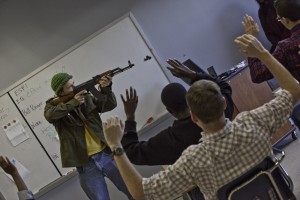The Search for Simple School Safety Solutions
Overhaul the nation’s mental health system. Arm all teachers. Ban guns. Fight back against the attacker. Use ready-made school crisis plans. These and a host of other “simple solutions” dominate the discussion of school shootings. These types of “ABC” approaches attempt to boil our school safety efforts down to a simple formula when in reality we face complex and evolving risk. This is as much of an oversimplification as Lenin’s calls for “Land, Bread and Peace” to fix the problems of Russia were in 1917.
School Shootings Have Been a Significant Problem for More than a Century
After every mass casualty school shooting, we re-examine ways to “put an end” to these types of campus attacks. In fact, mass casualty shooting incidents have happened since the 1800s when five students where shot by a troubled man with a shotgun at a New York Catholic school. Other attacks with hatchets, firearms and even explosives date back to at least 1764. And the most deadly attack in the U.S. involved a 1958 arson fire that claimed more lives than every K12 active shooter incident in the history of our nation combined. While there is no doubt that more K12 active shooter events have taken place in the past twenty years than in any other comparable time period, the concept of a mass casualty school attack is far from a new phenomenon.
Why are Our Perceptions of School Safety so Out of Balance?
Intensive, emotive and sensational media coverage has dramatically changed our awareness of and reaction to horrific acts of school violence and driven an increased focus on school safety. This heightened awareness has resulted in tremendous progress in our K12 schools. Contrary to popular perception, increased efforts have been at least partially responsible for an overall reduction in K12 school homicides from the 1970s and 1980s when more students and staff were murdered annually than are today. In fact, the per capita homicide rate has dropped since this decrease is in the face of a continual population increase. While we were tragically complacent about school violence in the 1970s and 1980s when more victims were being killed in schools, we have now gone too far in the other direction, often virtually ignoring the most common forms of death on campus while we focus intently on the horrible yet statistically less likely mass casualty incidents.
The Dangers of Desperate Attempts to Oversimplify School Safety
Available data indicates that about one school-related death in twenty is from an active shooter event. This means that it is extremely dangerous to focus intently on active shooter events while reducing our available time, energy and limited fiscal resources on the types of incidents that are the cause of more than 95% of all school-related deaths. These quiet and often preventable types of tragedies may not garner national headlines, but they do cause incalculable anguish since they represent thousands of deaths over the past four decades. In addition, many simplistic and popular approaches to the prevention of and preparedness for active shooter events lack supportive evidence that they are actually effective.
I believe there will be more active shooter incidents in our schools and it would not surprise me to see one or more events involving even far greater loss of life than we have previously seen. There are also indications that we may see a rise in the more typical types of homicides that take place in K12 schools as well. We can and should continue to find more effective ways to address the problems of school shootings. We also have a responsibility to implement the many proven strategies that we know work while we explore in a logical fashion other approaches that may work to prevent death in our schools.
